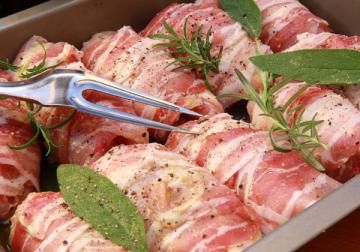Rome recipe: Saltimbocca alla Romana
There is no doubt that Saltimbocca alla Romana is one of the most common meat courses of traditional Roman cuisine.
These thin slices of veal topped with prosciutto and sage and quickly cooked in white wine and butter can be found in restaurants and dinner tables all over the city. However the original recipe is thought to have come from Brescia in northern Italy and different variations still exist all over the country.
One of the first people to document Roman-style Saltimbocca was celebrated gastronome and cookbook writer Pellegrino Artusi, who published the recipe in his 1891 book La scienza in cucina e l'arte di mangiar bene after having eaten it at the Trattoria Venete in Rome, describing the dish as simple and healthy.
Literally translated as ‘jump in the mouth’, Saltimbocca should be light, tasty and satisfying. As with most Italian dishes, the focus is on good quality ingredients and the key is getting the perfect balance between the main flavours. For the veal it is worth going to the butcher to get slices of noce di vitella which is the tenderest cut; you could also use thin slices of pork or chicken as a substitute.
Try to get a good bunch of dark green, intensely perfumed sage and choose a delicate prosciutto to avoid overpowering the dish: Sauris or S. Daniele work well.
Some recipes recommend coating the veal slices in flour before frying but this can make the consistency a bit thick and heavy. Omitting the flour also means that the prosciutto and sage begin to crisp a little, adding more texture to the dish. There is also a variation in which the veal is rolled into an involtino but this makes it harder to achieve the real melt In the mouth texture that is the sign of a great Saltimbocca.
Ingredients (serves 2)
4 slices of veal 4 slices of prosciutto crudo
4 large sage leaves
30g butter
Salt & pepper
A large splash of white wine
Instructions
Tenderise the veal slices by covering them with clingfilm or grease-proof paper and battering them with a meat hammer or rolling pin until they are thinner. Cut off any excess fat and trim the edges to shape them into ovals. On each veal slice lay one slice of ham, top with a sage leaf and secure with a toothpick.
Season each slice with salt and pepper. In a frying pan, melt the butter until it foams and then add the veal and cook on a high heat for about 2 minutes, then turn the slices over and add a large splash of white wine.
Cook for a further 2 minutes then remove the slices from the pan and leave to rest for about 1 minute.
Pour over the cooking juices and serve.
Kate Zagorski



















